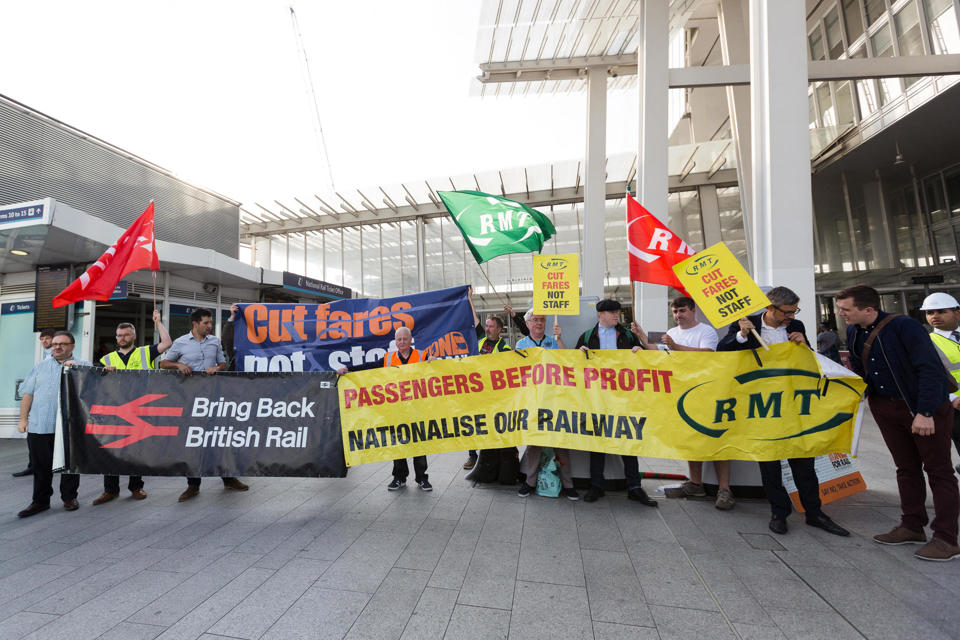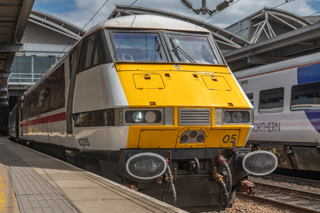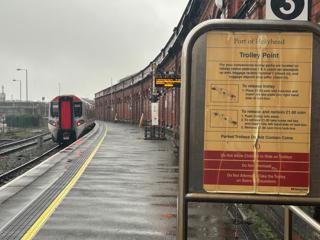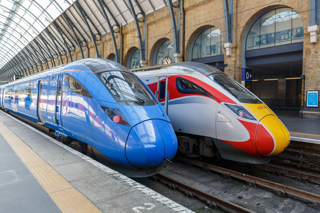Nationalisation is Labour’s special word for change in the way Britain’s railways are run, but what will it really mean? Howard Johnston investigates.
While the new Labour government has pledged to create Great British Railways and improve the quality of passenger services, will it fundamentally have the money to do all that it wants?
Nationalisation is Labour’s special word for change in the way Britain’s railways are run, but what will it really mean? Howard Johnston investigates.
While the new Labour government has pledged to create Great British Railways and improve the quality of passenger services, will it fundamentally have the money to do all that it wants?
The truth could well emerge in November, when the Office of Rail and Road publishes its annual report on the UK’s railway’s finances.
This is an independent health check of the greatest significance, and there is hope that the taxpayer will not have to stump up anything like the £11.9 billion support that was required for the 12 months to the end of March 2023.
New Chancellor of the Exchequer Rachel Reeves has already made it clear to all public sector bodies - including the National Health Service, education and social services - that there is no blank cheque. Investment can only come from economic growth and sustained investment from private industry.
Importantly, we should not get too hung up over comparisons with the ‘nationalisation’ that led to the creation of British Railways back in 1948. Today, freight barely gets a look-in because its operators are multi-nationals, and in any case the sector only just about breaks even. Growth is good, however, for common-sense environmental reasons.
The most up-to-date ORR statistics suggest that the widely discredited train operating companies (currently 20, including some already under Department for Transport control, but not Eurostar, the London Underground or light rail) may not be the massive financial drain that is often presented to us. The wild card is the size of the extra income from the Elizabeth line, whose outstanding success since opening in May 2022 has been way beyond expectations.
If it can keep its nerve, Labour should be heartened that the railways’ finances are on the mend, after being uncontrollably wrecked by global issues such as the COVID pandemic, inflation, and the much higher cost of borrowing.
This is no comfort for passengers, who might have imagined from Labour’s upbeat manifesto that rail fares might come down, and service frequencies increased. Likewise for regional and local authorities aspiring to reopen old routes, and for city mayors who have already announced plans to expand their light rail systems or create new ones.
And looking to past Labour governments shows that is not necessarily the case.
In 1948, Prime Minister Clement Attlee realised his ideological objectives, and then proceeded to starve rail of investment because it was regarded as a low priority.
In 1997, Tony Blair chose to continue with his Conservative predecessor John Major’s privatisation policies, and Labour Chancellor Alistair Darling became notorious for cancelling already-agreed schemes.
The present-day DfT has its supporters as well as its critics, and it is not universally realised that it already has tight control over how our rail network is run.
To win a franchise, train operators - now dwindling in numbers and disillusioned with their shrinking financial return (remember that Abellio quit last year) - were urged by the DfT to show high revenues by maximising returns.
But operators have no jurisdiction over peak fares, Network Rail track access charges, timetabling, or even car park prices. They can, however, decide what colour a station can be painted, have a say in what the station cafe serves, and choose their staff uniforms.
Only seven franchised train operators were expected to pay dividends in the last year, totalling £76 million.
We know that change will not take place overnight. In a BBC Panorama programme on July 22, new Health Minister Wes Streeting admitted that it might take ten years to see the real benefits of improvements in the NHS. But we hope that core rail reform, including the establishment of GBR, will happen much sooner.
In contrast to 75 years ago, Labour’s latest manifesto for change is dominated by the passenger sector, because this represents the lion’s share of all current business.
The traditional commodities of coal, steel and routine wagonload freight traffic have largely disappeared, to be replaced by aggregates and container traffic, all of which can never be returned to state control.
The once-important Royal Mail post and parcels traffic will fizzle out in October (see RAIL 1014), and the newspaper business has evaporated by transferring exclusively to road.
The passenger portfolio continues to evolve, with suburban travel increasingly devolved to the regions, while regional business is concentrated on far fewer but speeded-up high-quality routes, commonly underpinned by social subsidies. Only inter-city seems to be ploughing broadly the same furrow, although this may change when HS2 opens.
The new ORR figures will merit close scrutiny. In 2022-23, the government contributed £21.1bn, which consisted of £11.9bn for the operational railway, £6.9bn for HS2, £2bn for other infrastructure, and £100m for East West Rail.
Network Rail received £7.5bn of public funds, but is having to cut back. Struggling passenger operators received £4.4bn (41.1% down on 2021-22) because business is bouncing back.
Rolling stock owners are earning less because they have scrapped several train fleets.
To satisfy its objectives, the government will need to keep the private sector happy because it is investing vast sums - mainly in rolling stock (£512m in a single year), but also in stations (£77m), and track, signalling and IT (£169m). There is also one year’s £2bn spend on the Transpennine Route Upgrade, East West Rail Phase 2, East Coast Digital, and the Midland Main Line.
Fact and fantasy?
Labour will have to tread carefully with the trade unions, who may not take too kindly to the kind of change being suggested.
Long-running disputes over pay and conditions have not been resolved, and earlier this year the left-leaning Daily Mirror homed in (again) on the salaries of senior railwaymen - notably FirstGroup Chief Executive Graham Sutherland’s £1.2 million package and that of Arriva Chief Executive Mike Cooper (almost £1.1m).
The Mirror, however, failed to mention that their business responsibilities are much wider than just railways.
The RMT union, which is also sympathetic to unrest in the health service and education, wants rid of the train operating companies, as well as rolling stock owners who own around 90% of the 11,000 vehicles that the union claims were funded by public investment.
While the RMT says that the large dividends paid to shareholders between 2012-18 would have funded 700 new trains, it overlooks that many recent vehicles have been funded privately - and no government of any colour would have spent this kind of money.
Wise words after 1948
While much of the thinking behind nationalisation of the ‘Big Four’ in January 1948 was a consequence of the UK’s parlous state, it also clearly fitted in with Labour ideology that public ownership of production and distribution was for everyone’s benefit.
Back then, the ‘Big Four’ (Great Western, LMS, LNER and Southern) were on the floor after the Second World War.
However, the rail professional Michael Bonavia wrote that “Nationalisation of transport in 1948 was in no sense a necessity except as the redemption of a party pledge”.
The words of author and commentator Stanley Creer in 1986 still hold true: “To its cost, the country has found that nationalisation is not the panacea that its advocates predicted. Industrial relations can hardly be said to have improved, indeed rather the reverse. A characteristic of all British governments has been their reluctance to invest in the industry, and a lost cause has been the failure to implement the integration of rail and road transport.”
Let’s all hope that Great British Railways starts well - unlike BR, which had to deal with five serious accidents in its first few months (with the loss of 16 lives), and then suffered from widespread devastation caused by torrential summer flooding.
It also quietly began a series of closures of uneconomic lines, while investment was misdirected into like-for-like replacement of the steam locomotive fleet instead of electrification.
The possibility of cuts
There are some interesting pointers in Labour’s manifesto published in April, which fell short of promising investment, and does preclude cuts. Note the key words in italics:
“Our plan is to deliver a unified and simplified rail system that relentlessly focuses on securing improved services for passengers and better value for money for taxpayers.”
It also says: “Every decision - from the long-term strategy set by ministers to the operational decisions of executives and professionals - will be tested against how it delivers… an affordable… railway for passengers.”
Pessimists might rightly interpret the words ‘better value’ as rigid control on investment, or worse. Labour’s past record in this regard has not been good, as evidenced.
Labour has, however, made vote-catching promises such as automatic delay and cancellation refunds tickets, more integrated timetables, best-price guarantees, digital season tickets, a new Passenger Standards Authority, better mobile phone connectivity, and integration with other modes such as buses and cycle hire.
This is where the arm’s length and long-awaited Great British Railways comes in, offering robust governance and “accountability to the public and Parliament for services and infrastructure determined by the Secretary of State, whose agreement will be necessary for significant decisions around services and infrastructure. Prices must be kept, wherever possible, at a point that works for both passengers and taxpayers”.
Read their lips.
This article, complete with more facts and figures, first appeared in issue 1016 of RAIL. Subscribe today and never miss an issue. With a Print + Digital subscription, you’ll get each issue delivered to your door for FREE (UK only). Plus, enjoy an exclusive monthly e-newsletter from the Editor, rewards, discounts and prizes, AND full access to the latest and previous issues via the app.
Login to continue reading
Or register with RAIL to keep up-to-date with the latest news, insight and opinion.

















Login to comment
Comments
No comments have been made yet.